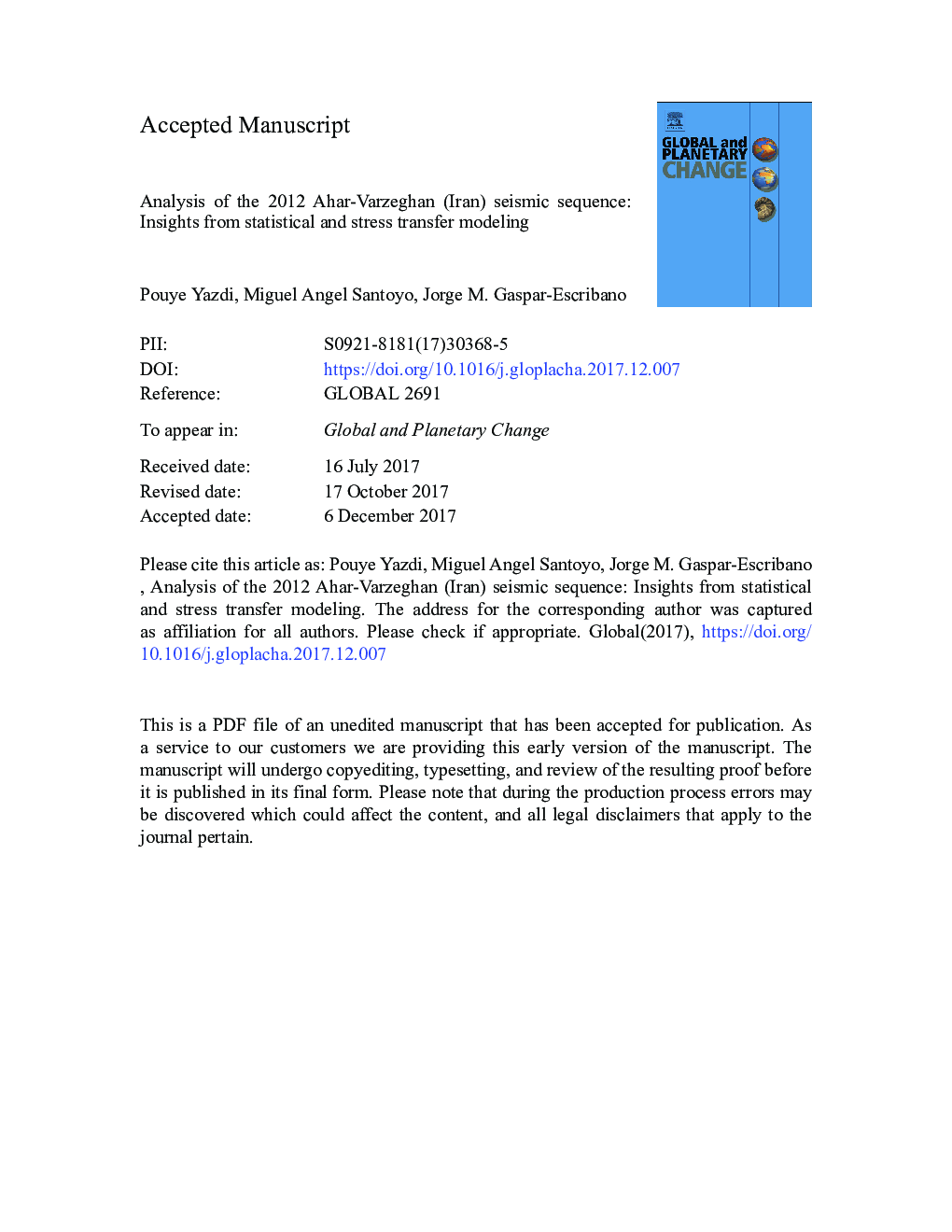| Article ID | Journal | Published Year | Pages | File Type |
|---|---|---|---|---|
| 8867616 | Global and Planetary Change | 2018 | 55 Pages |
Abstract
In order to analyze the spatial distribution of the sequence, new source models are proposed for the two main shocks. For the first shock, the coseismic slip distribution is constrained by the available data on surface ruptures. A Coulomb failure stress transfer model produced by the first event along optimally-oriented planes allows identifying the areas with positive stress loads where the rupture of the subsequent aftershocks may have occurred. The positive â CFS areas are compared for two depth intervals: 3-10 km and 15-22 km overlapping over 350 relocated hypocenters, giving arguments supporting the interpretation of â CFS as a main mechanism for aftershock triggering in deeper zones of the upper crust.
Related Topics
Physical Sciences and Engineering
Earth and Planetary Sciences
Earth-Surface Processes
Authors
Pouye Yazdi, Miguel Angel Santoyo, Jorge M. Gaspar-Escribano,
